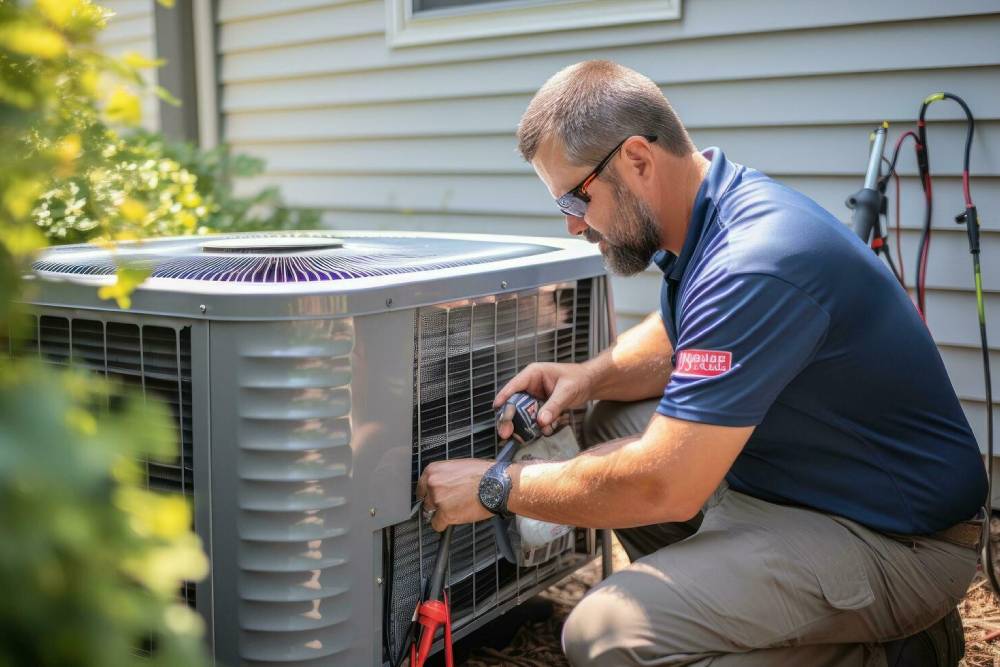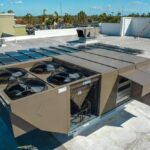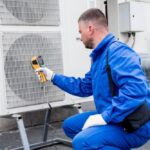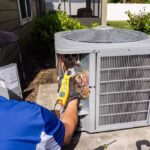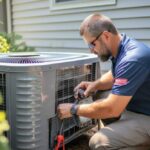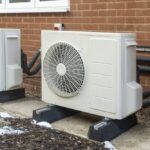Table of Contents
- What Is an HVAC Service Disconnect?
- Can the Service Disconnect Be Connected Directly to the HVAC Unit?
- Why the Disconnect Shouldn’t Be Mounted on the Unit Itself
- Types of HVAC Disconnects
- Distance and Placement Requirements
- Common Mistakes Homeowners Make
- How Rescue Heat & Air Ensures Safe, Code-Compliant Installation
- Ready for Safe, Professional HVAC Installation in Oklahoma?
If you’ve ever looked at your outdoor HVAC unit, you’ve probably noticed a small metal box mounted nearby — that’s the HVAC service disconnect. But what exactly does it do, and can it be directly connected to your HVAC system?
This is an important question for homeowners, HVAC technicians, and property managers alike, especially when it comes to safety, code compliance, and system performance. Let’s break it down clearly and in detail.
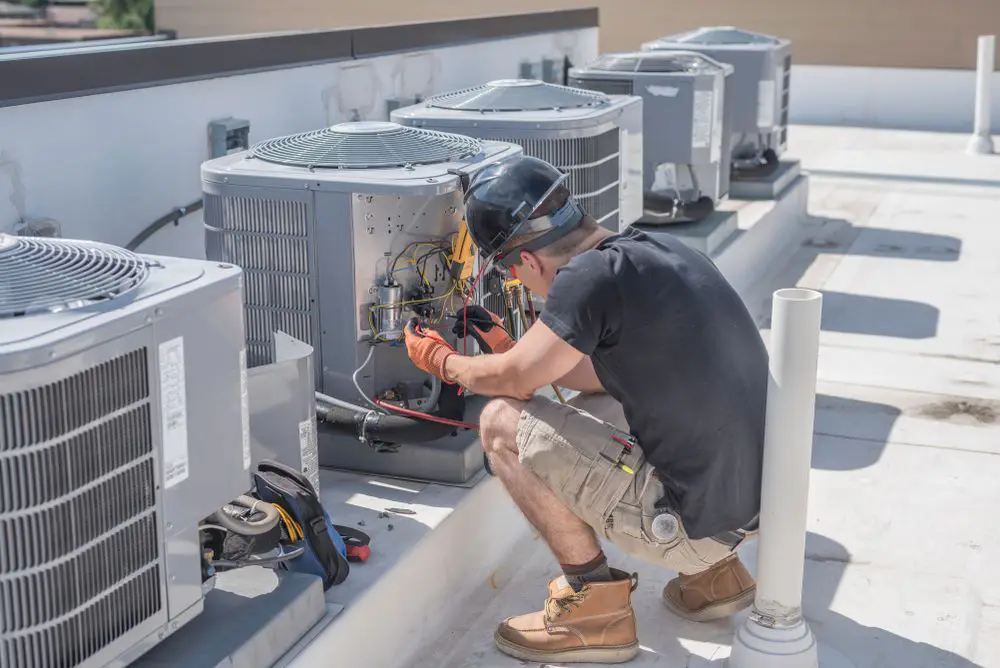
What Is an HVAC Service Disconnect?
An HVAC service disconnect (also known as an AC disconnect box) is a safety device installed near your outdoor condenser or heat pump. Its purpose is to cut off electrical power to the HVAC unit for servicing or emergency shutdowns.
In most residential setups, it’s mounted within sight and about 3–6 feet of the outdoor HVAC unit. Electricians or HVAC contractors typically install it as part of the electrical circuit during system installation.
Main purposes include:
- Allowing technicians to safely repair or replace system components
- Preventing electrical hazards during service
- Ensuring compliance with National Electrical Code (NEC) standards
Can the Service Disconnect Be Connected Directly to the HVAC Unit?
Yes, it can — but only in specific ways that meet safety codes and manufacturer specifications.
The service disconnect must be wired in series between your home’s electrical panel and the HVAC unit. However, it should not be physically attached to the unit itself — it needs to be mounted on a nearby wall or stand to allow safe access and prevent vibration or heat transfer from the unit.
Here’s how the connection typically works:
- Power runs from your main electrical panel through a dedicated circuit breaker.
- It connects to the disconnect box near your HVAC unit.
- From there, wiring continues into the outdoor condenser or heat pump.
Pros:
- Provides both heating and cooling
- Extremely energy efficient — uses up to 50% less electricity than electric furnaces
- Environmentally friendly — reduces carbon emissions
- Consistent comfort throughout the year
This setup allows power to be safely cut off at the disconnect box without entering your home’s main electrical system.
Why the Disconnect Shouldn’t Be Mounted on the Unit Itself
While it might seem convenient to attach the disconnect directly to the HVAC housing, it’s not recommended or allowed under electrical code for several reasons:
Vibration Damage
The outdoor condenser vibrates during operation, which could loosen or damage wiring connections.
Heat Exposure
The unit generates heat, which can degrade electrical insulation and reduce lifespan.
Accessibility Requirements
The NEC mandates that the disconnect must be easily accessible for service — mounting it directly to the unit could block access or make servicing difficult.
Safety Compliance
Most local codes require the disconnect to be mounted separately on a solid surface, such as a wall, post, or pad, within visible distance.
Types of HVAC Disconnects
There are two main types of disconnects commonly used in residential and light commercial HVAC systems:
1. Fused Disconnects
- a. Include built-in fuses for circuit protection.
- b. Common for larger HVAC systems where extra overload protection is required.
2. Non-Fused Disconnects
- c. Simpler design that allows manual disconnection without additional fuses.
- d. Suitable for smaller systems or where protection is already provided by the circuit breaker.
The choice depends on your system’s electrical load, manufacturer recommendations, and local electrical codes.
Distance and Placement Requirements
According to industry standards, the HVAC service disconnect must be:
- Installed within sight of the unit (typically within 50 feet).
- Mounted at least 3 feet away from the compressor if required by local code.
- Positioned 4 to 6 feet above the ground for easy access.
These guidelines help ensure that technicians can safely work on your system without unnecessary risk.
Common Mistakes Homeowners Make
- Mounting the disconnect too far from the unit — violates code and makes service unsafe.
- Using the wrong disconnect type — for example, a non-fused unit on a system requiring overload protection.
- DIY installations — incorrectly wiring a disconnect can lead to shorts, system damage, or even electrical fires.
Always hire a licensed HVAC or electrical professional to ensure proper installation and compliance with NEC Article 440 and local Oklahoma regulations.
How Rescue Heat & Air Ensures Safe, Code-Compliant Installation
At Rescue Heat & Air, we ensure every HVAC installation or HVAC repair in Oklahoma meets the highest safety and code standards. Our certified technicians handle everything from proper disconnect placement and electrical safety checks to full system testing before startup.
When you trust us, you’re not just getting comfort — you’re getting peace of mind knowing your system is safe, compliant, and built to last.
Ready for Safe, Professional HVAC Installation in Oklahoma?
If you’re unsure whether your system’s disconnect is properly installed or compliant, don’t take chances.
Call Rescue Heat & Air today at 918-946-6681 or schedule an inspection online. We’ll make sure your HVAC system operates safely and efficiently — no guesswork required.

